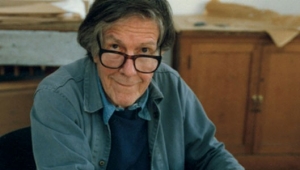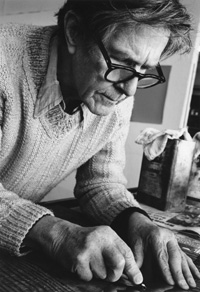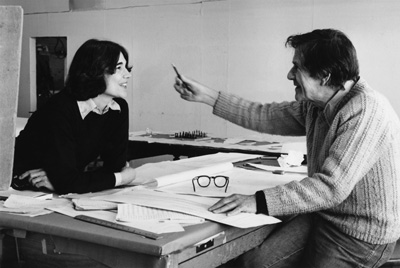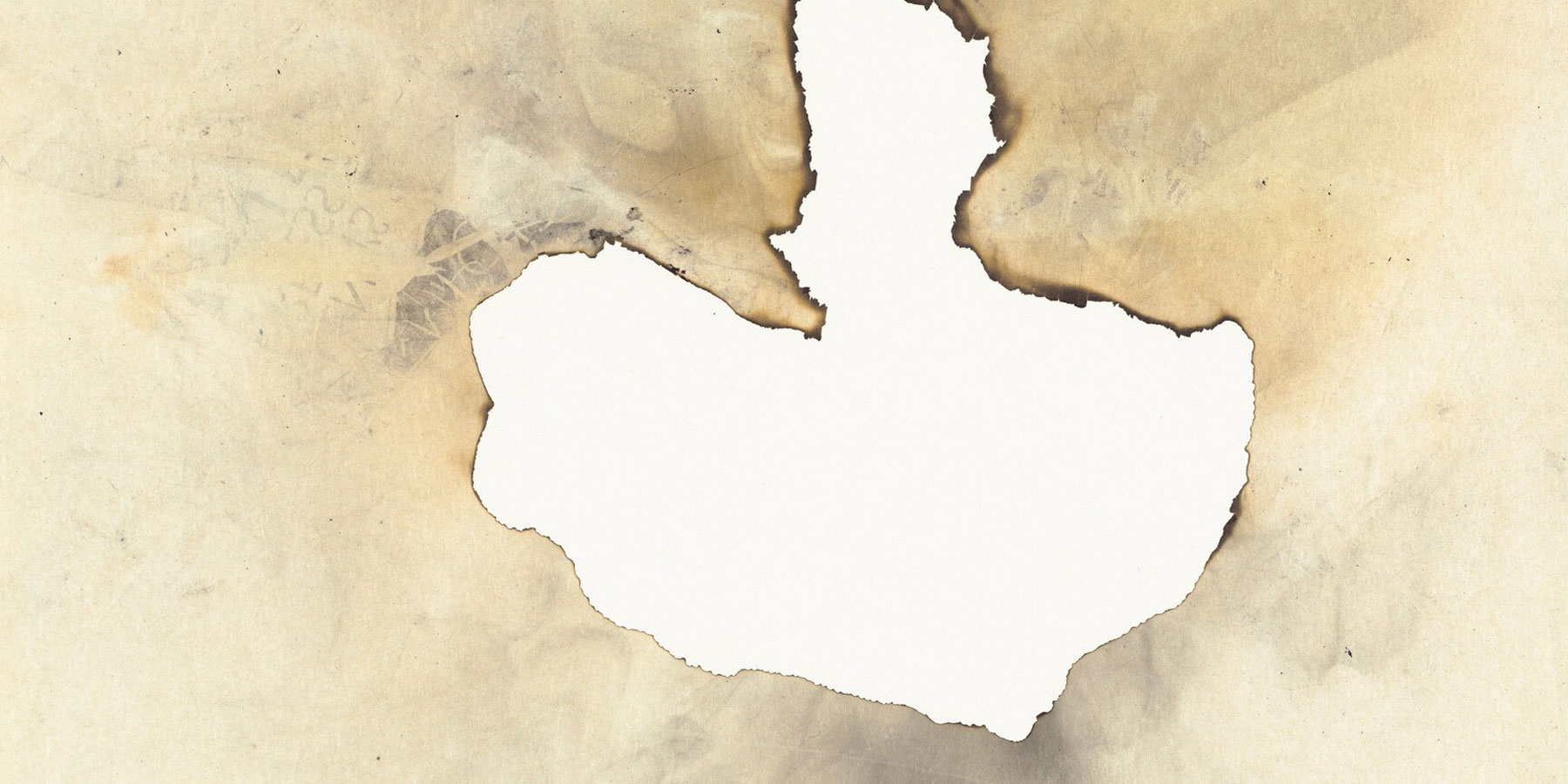John Cage (American, 1912–1992) devised an unconventional artistic approach, using chance to drive the process. His interests in Zen Buddhism, natural history, and music theory inform his print projects, but the specifics of their formal properties — color, composition, shape, among others — hinged on what Cage called chance operations. He compiled menus of options (for example, how many lines, which colors, in what positions) and used computer software to generate a random number that corresponded to a particular choice. The computer program simulated a coin-flipping method dictated by the I Ching, an ancient Chinese book of divination.
John Cage

John Cage at Crown Point Press, Oakland, c. 1980, photograph by Kathan Brown, Courtesy Crown Point Press

John Cage engraving a plate for Changes
and Disappearances, 1982, photograph by
Colin McRae, Courtesy Crown Point Press
By ceding decisions about the appearance of his artworks to chance, Cage sought to avoid directly exerting his will or expressing his personal aesthetic taste. He referred to this method as nonintention. “I use chance as a discipline,” he said, “so that if you work with chance operations, you’re basically shifting . . . from the responsibility to choose . . . to the responsibility to ask.” Although he ceded formal choices to chance, he retained a degree of overall control, having established the questions as well as the parameters for potential answers. Cage’s work at Crown Point Press also demonstrates his gradual willingness to override chance decisions and more directly assert his aesthetic sensibility.

Kathan Brown and John Cage at Crown Point Press, 1982, photograph by Colin McRae, Courtesy Crown Point Press
Banner image: Detail, John Cage, Eninka 29, 1986, burned, smoked, and branded gampi mounted to paper, National Gallery of Art, Washington, Gift of Crown Point Press, 1996, © John Cage Trust
"Yes, No, Maybe: The Art of Making
Decisions," lecture by exhibition curators Judith Brodie and Adam Greenhalgh (audio)
Julie Mehretu, artist, in conversation with curator Judith Brodie, Diamonstein-Spielvogel lecture (audio)
"An Insider's Perspective," lecture by Kathan Brown, founder of Crown Point Press (audio)
Exhibition tour by curators Judith Brodie and Adam Greenhalgh (audio)











